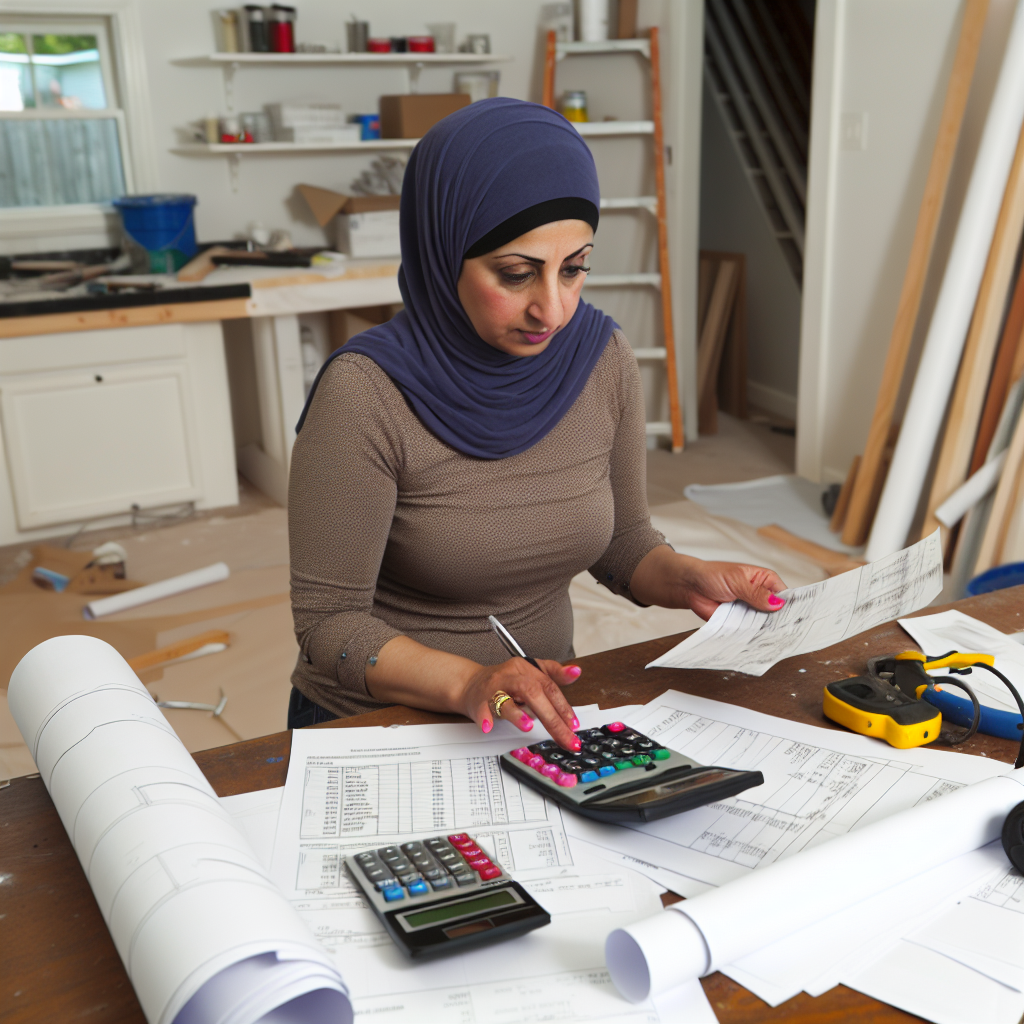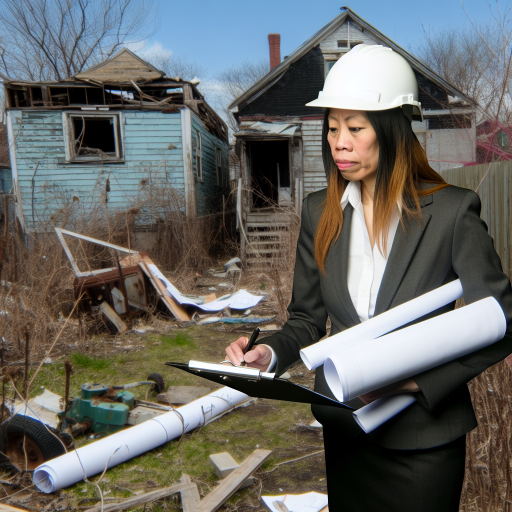Understanding the Importance of a Realistic Renovation Budget
Setting a realistic renovation budget is crucial for house flipping success.
A well-defined budget can prevent financial losses during renovations.
Moreover, it allows for proper allocation of resources.
Understanding renovation costs is the first step in managing your budget.
Each component of the renovation has unique expenses to consider.
Identifying Key Renovation Costs
Start by outlining all necessary renovation areas.
Common expenses include structural repairs, aesthetic upgrades, and essential systems.
- Electrical work.
- Plumbing updates.
- Roofing and siding repairs.
- Flooring installation.
- Kitchen and bathroom remodels.
Each of these areas contributes to the overall renovation cost.
Setting Contingencies for Unexpected Expenses
Unexpected issues can arise during renovations.
It’s wise to set aside a contingency fund for these surprises.
Many experts recommend a contingency of 10-20% of the total budget.
This cushion can accommodate costs like structural damage or code violations.
Prioritizing Renovation Tasks
Not all renovations are equally essential to your budget.
Identify which tasks offer the highest return on investment.
Prioritize upgrades that enhance appeal and functionality.
Focus on areas that buyers value, such as kitchens and bathrooms.
Balance immediate needs against cosmetic changes.
Staying Flexible with the Budget
Market conditions can shift, affecting material and labor costs.
Staying flexible allows you to adjust your budget as needed.
Regularly review and adjust costs in response to market changes.
This adaptability can help mitigate financial risks associated with house flipping.
Ultimately, a realistic budget fosters a successful renovation project.
Strategies for Managing Renovation Budgets in House Flipping
Setting Clear Goals and Objectives for the Flip
Establishing specific goals is crucial for a successful house flip.
Clear objectives help you stay focused throughout the renovation process.
Define what you want to achieve with the property.
Consider factors such as profit margins, timelines, and buyer preferences.
Next, outline the scope of work required to meet these goals.
This could include structural changes, cosmetic updates, or both.
Additionally, having a detailed plan helps allocate resources effectively.
A well-structured plan minimizes unexpected costs during the renovation.
Creating a Realistic Budget
A realistic budget is essential to manage renovation costs effectively.
Start by estimating expenses for each phase of the project.
Include costs for materials, labor, permits, and unforeseen issues.
Prioritize high-impact areas to allocate funds efficiently.
Utilize online resources or consult professionals for accurate estimates.
Track all expenses meticulously to avoid overspending later.
Staying Flexible to Adjust Plans
Flexibility is vital when managing renovation projects.
Unexpected challenges often arise, requiring quick adjustments.
Be prepared to revisit your original goals and budget.
Having backup plans can help you navigate unforeseen situations.
For instance, if a structural issue is discovered, reassess your budget.
Consider less expensive alternatives that still meet your needs.
Utilizing Technology for Budget Management
Leverage technology to enhance budget management processes.
There are various apps designed specifically for project management.
These tools help track expenses and manage tasks efficiently.
Additionally, consider using spreadsheet software to monitor budgets in real time.
Integrating technology streamlines communication with contractors as well.
Monitoring Progress Regularly
Regular progress monitoring is essential for staying on track.
Set milestone check-ins to review budget and timeline adherence.
Evaluate work completed and its impact on the overall budget.
This approach allows for timely adjustments as necessary.
Keep communication open with all team members during this process.
Conducting a Comprehensive Property Assessment
Understanding Project Scope
Begin by clearly defining the project scope.
Identify the renovations needed for the property.
Consider elements like structural repairs and cosmetic updates.
Documentation helps streamline the renovation process.
Inspecting Structural Integrity
Thoroughly examine the property’s structural elements.
This includes the foundation, roof, and framing.
Hire a professional inspector to evaluate these components.
A structural survey identifies potential issues early.
Assessing Mechanical Systems
Evaluate the mechanical systems in the property.
This encompasses plumbing, electrical, and HVAC systems.
Check for outdated systems needing upgrades.
Prioritize repairs that impact the home’s performance.
Reviewing Aesthetic Elements
Take stock of the property’s aesthetic features.
Focus on items like flooring, paint, and fixtures.
Determine what can be preserved versus what needs replacement.
Stylish updates can significantly boost property value.
Creating a Repair and Upgrade List
Compile a comprehensive list of repairs and upgrades.
Organize tasks into immediate priorities and long-term goals.
Prioritize tasks based on necessity and impact on value.
A well-structured list enhances project clarity.
Estimating Costs
Once you have your repair list, estimate costs for each item.
Use current market prices for materials and labor.
Compare quotes from multiple contractors for accuracy.
Factor in contingency costs for unexpected expenses.
Setting a Realistic Timeline
Create a realistic timeline for the renovation process.
Account for potential delays due to material availability.
Establish milestones to track progress effectively.
A well-planned timeline helps manage expectations.
Documenting Everything
Maintain detailed records of your assessment findings.
Document all estimates, contracts, and communications.
This ensures that you have reliable references throughout the project.
Good documentation aids in resolving disputes if they arise.
Find Out More: Understanding Tenant Screening To Minimize Rental Property Risks
Establishing a Detailed Itemized Budget
Understanding the Importance of an Itemized Budget
Creating an itemized budget is critical in house flipping.
This budget provides a clear outline of all costs.
It helps prevent overspending and misallocation of funds.
Moreover, an itemized budget keeps you accountable during renovations.
Identifying All Necessary Expenses
Start by listing all potential renovation costs.
Remember to include labor, materials, and permits.
Additionally, factor in unexpected expenses that may arise.
Consider hiring a contractor to provide accurate estimates.
They can help uncover hidden costs specific to the property.
Organizing Your Budget with Categories
Group your expenses into clearly defined categories.
Common categories include structural work, electrical, and plumbing.
This organization makes it easier to track expenses.
Additionally, it helps you identify areas for cost-cutting.
Setting Priorities Within Your Budget
Determine which renovations are essential for profit.
Focus on high-impact areas like kitchens and bathrooms.
Consider prioritizing repairs that affect property value first.
Allocate more funds to improvements that return a higher ROI.
Regularly Reviewing and Adjusting Your Budget
Regularly compare actual expenses to your budgeted amounts.
This practice identifies areas where you overspend.
Adjust your budget as necessary to reflect changing conditions.
Staying flexible helps you adapt to unexpected challenges.
Utilizing Budgeting Tools and Software
Leverage technology to enhance your budgeting process.
Use spreadsheet software or dedicated budgeting applications.
These tools simplify tracking expenses and managing budgets.
Many applications offer templates specifically for renovations.
Consulting with Financial Experts
If needed, consult with a financial advisor familiar with house flipping.
Their expertise can offer valuable insights into effective budgeting.
They can help you make informed financial decisions.
Furthermore, they can assist in planning for tax implications.
Discover More: The Pros and Cons of Investing in Vacation Rental Properties
Allocating Contingency Funds for Unexpected Expenses
The Importance of Contingency Funds
Contingency funds are essential in any renovation budget.
They provide a safety net for unexpected costs.
Many unforeseen issues can arise during a renovation.
For instance, older homes often hide problems like plumbing issues.
Furthermore, fluctuations in material costs can catch anyone off guard.
Determining the Right Amount
Deciding how much to allocate for contingencies requires careful thought.
A common rule is setting aside 10-20% of your total budget.
However, the percentage can vary based on project complexity.
For high-risk properties, consider a larger contingency fund.
Budgeting for Specific Areas
Identify areas in your renovation that are most prone to surprises.
For example, structural issues often lead to significant costs.
Likewise, electrical and plumbing updates can be unpredictable.
Allocate additional funds for these high-risk areas accordingly.
Tracking and Adjusting Contingency Expenses
Once you set aside funds, monitor your spending closely.
Regularly review and adjust your budget as needed.
Keep detailed records of all expenses and changes.
This practice will help you stay within budget or make informed decisions.
Communicating with Your Team
Effective communication with your renovation team protects your budget.
Discuss potential issues before they arise to minimize surprises.
Additionally, make sure they know your budget constraints.
This will help them identify cost-effective solutions during renovations.
Learn More: The Advantages of Investing in Real Estate During Economic Uncertainty

Prioritizing Renovation Tasks to Maximize ROI
Identifying High-Impact Areas
Focus on areas that provide the greatest return on investment.
Updated kitchens and bathrooms often boost home value significantly.
Fresh paint and curb appeal can attract potential buyers quickly.
Consider energy-efficient updates that can entice eco-conscious buyers.
Always conduct market research to identify buyer preferences.
Creating a Renovation Budget
Draft a budget that aligns with your acquisition costs and expected sales price.
Allocate funds to each task based on potential value increase.
Account for unexpected expenses by setting aside a contingency fund.
Keep track of expenses meticulously to avoid overspending.
Regularly review your budget to make necessary adjustments.
Timeline Management
Establish a realistic timeline for your renovation tasks.
Identify critical tasks that may take longer than expected.
Communicate effectively with your contractors regarding timelines.
Factor in possible delays due to weather or supply chain issues.
Align your timeline with market trends for the best sales opportunities.
Hiring the Right Professionals
Research and hire experienced contractors with good reviews.
Choose professionals who specialize in renovations that align with your goals.
Ensure your team is licensed and insured to avoid legal issues.
Set clear expectations regarding timelines and costs before starting.
Build a strong relationship with your contractors for smoother communication.
Evaluating Progress and Adjusting Plans
Regularly assess the progress of your renovation project.
Make adjustments based on what aspects are working well.
Consult your contractor for solutions to any arising problems.
Maintain flexibility in your renovation plan to adapt to new situations.
Track performance against your set timeline and budget to identify gaps.
Explore Further: Real Estate Syndications: A Beginner’s Guide to Group Investing for High Returns
Implementing Cost-Saving Techniques and DIY Options
Understanding the Importance of Budget Management
Managing a renovation budget is crucial for house flipping success.
A solid budget helps track expenses and avoid overspending.
Moreover, it enables investors to estimate profits accurately.
This foresight prevents financial pitfalls during the renovation process.
Identifying Cost-Saving Techniques
Various techniques exist to reduce renovation costs significantly.
Firstly, consider sourcing materials from local suppliers.
This often results in lower shipping fees and supports the community.
Secondly, always compare prices from multiple vendors.
Next, implement energy-efficient upgrades to save on long-term costs.
Utilizing Reclaimed Materials
Reclaimed materials can reduce costs without sacrificing quality.
Salvaging items from older homes can yield unique finds.
For example, vintage wood beams can add character to renovations.
Additionally, using refurbished fixtures can significantly enhance aesthetic value.
Leveraging Off-Peak Renovation Timelines
Timing your renovation can lead to substantial savings.
Many contractors offer lower rates during off-peak seasons.
Moreover, scheduling projects during slower months can ensure quicker availability.
Exploring DIY Options
Engaging in DIY projects offers both cost savings and personal satisfaction.
Start with small tasks to build confidence and skill.
Painting walls or landscaping can be done over a weekend.
Learning Helpful Skills
Consider taking workshops or online courses to acquire new skills.
Learning basic plumbing or electrical work can save substantial amounts.
Be sure to assess your limits; some tasks might require professionals.
Pooling Resources with Friends and Family
Enlist friends and family to assist with renovation tasks.
Organize a group for larger projects, such as roof replacements.
In return, offer to help them with future projects.
Tracking Progress and Expenses
Maintaining a detailed record of all expenses aids budget adherence.
Use spreadsheets or budgeting apps to monitor costs efficiently.
Regularly review your expenses to identify areas of overspending.
Adjusting the Budget as Needed
Be flexible and ready to adjust the budget throughout the process.
Identify any unexpected costs early to limit financial impact.
Additionally, prioritize essential projects versus optional upgrades.
Monitoring and Adjusting the Budget Throughout the Renovation Process
Establish a Clear Budget Before Renovation
Begin with a comprehensive budget plan for the renovation.
Include all potential costs such as materials, labor, and permits.
Use estimates from contractors to avoid underestimating expenses.
Break down the budget into categories for better clarity.
This approach helps in tracking spending effectively.
Track Expenses Regularly
Consistently monitor expenses against the budget.
Use spreadsheets or budgeting software for efficiency.
Update your records at least weekly to stay informed.
This practice allows for timely adjustments if needed.
Regular checks also prevent overspending.
Adjust Allocated Funds as Needed
Be flexible in reallocating funds where necessary.
If one area is under budget, consider using those savings elsewhere.
For instance, extra funds can enhance features or finishes.
Communicate these changes with your contractors and team.
This ensures everyone is aligned on budget adjustments.
Incorporate Contingency Funds
Set aside contingency funds for unexpected costs.
A standard recommendation is to allocate around 10-20% of the total budget.
Use these funds for any surprise expenses that arise.
Having a buffer can reduce stress during the renovation process.
It helps maintain financial stability throughout the project.
Review and Analyze Budget Outcomes
After completing the renovation, evaluate how well you stuck to the budget.
Analyze areas where expenses exceeded estimates.
Identify reasons for these discrepancies to improve future projects.
Learn from experiences to create more accurate budgets going forward.
This reflection fosters better financial planning in future flips.
Additional Resources
Is Flipping Houses Still Profitable in 2025? | HBR Colorado
Flipping Houses: How It Works, Where to Start, and 5 Mistakes to …




